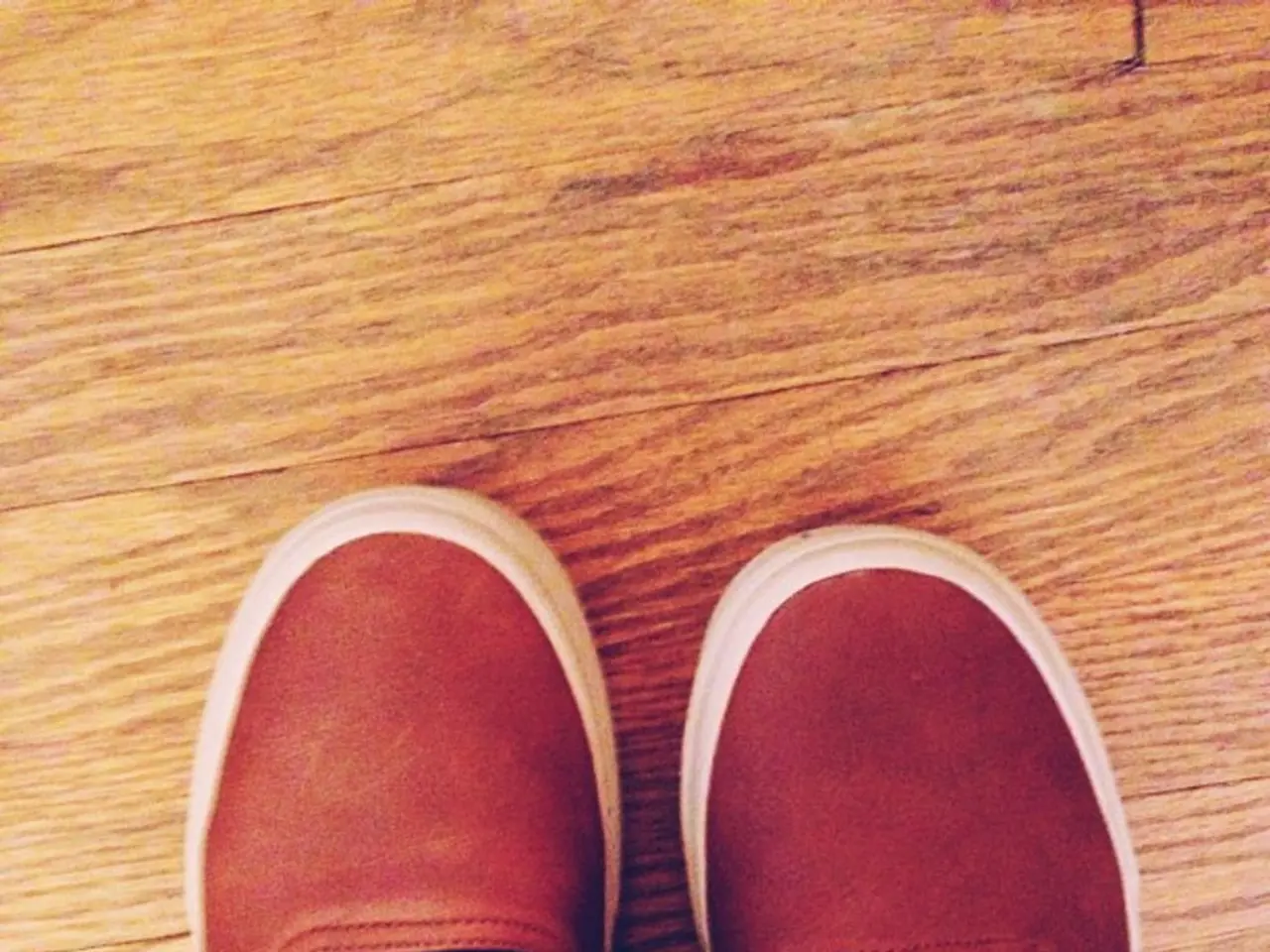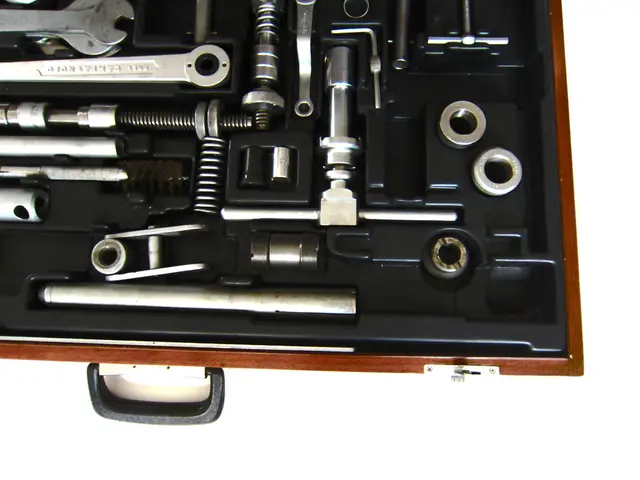Bone Anatomy Focus: Feet, Associated Conditions, and Additional Information
The human foot, a complex structure of 26 bones, plays a crucial role in our daily activities. Each bone group - the tarsal bones, metatarsal bones, and phalanges - contributes to the foot's functionality. However, these bones can sometimes be susceptible to various conditions and injuries.
One common issue affecting the foot is **stress fractures**. These tiny cracks in foot bones, often caused by overuse or repetitive impact, are often seen in runners and athletes. Symptoms include localized pain worsening with activity, swelling, tenderness, and difficulty bearing weight on the foot.
Another prevalent issue is **arthritis**, which can be osteoarthritis or rheumatoid arthritis. This condition occurs due to degeneration or inflammation of foot joints, more common in older adults or those with previous joint injuries. Symptoms include joint stiffness, swelling, persistent aching or throbbing pain, and limited range of motion.
**Flat feet**, or fallen arches, are another common issue. This condition occurs when the foot arches collapse or underdevelop, affecting alignment. Symptoms include achy or tired feet after walking or standing, arch or heel pain, and inward rolling of the feet.
**Plantar fasciitis**, although it involves the heel bone, primarily affects the soft tissue attached to the bone, causing sharp heel pain, especially in the morning or after long standing.
**Calcaneal oedema**, or swelling of the heel bone, is often associated with plantar fasciitis but is distinct. It worsens with continued walking and can cause pain resembling walking on a stone.
**Achilles tendinitis** is inflammation of the Achilles tendon, which attaches the calf muscles to the heel bone. This condition is due to overuse or sudden activity increase and causes pain or stiffness at the heel back, swelling, tenderness, and pain that increases with walking or stair climbing.
**Morton's neuroma** is a nerve-related condition that affects the foot bones area. It is caused by an enlarged or damaged nerve between foot bones near the toes, often from pressure (tight shoes). Symptoms include sharp, burning pain in the ball of the foot, tingling, numbness, and a feeling like walking on a marble or stone.
Other conditions affecting the bones of the feet include **sesamoiditis**, inflammation of the sesamoid bones at the base of the big toe, causing significant pain in this area; **gout**, a type of inflammatory arthritis that occurs due to a high concentration of uric acid in the blood and causes pain and swelling in the affected area; **hammer toes**, a condition that causes toes to point downward and form a claw shape, potentially causing pain, calluses, difficulty walking, and difficulty bending the affected toes; and **bunions**, a prominent bump on the inside of the foot, near the base of the big toe, caused by the bone at the base of the toe separating from the bone at the base of the second toe.
Early diagnosis and treatment are essential to prevent worsening and maintain foot function. Certain conditions, such as a lack of thyroid hormone or a calcium or vitamin D deficiency, can undermine the body's ability to heal microfractures. It's crucial to maintain a healthy lifestyle, wear appropriate footwear, and seek medical attention if experiencing any unusual foot pain or discomfort.
[1] Mayo Clinic. (2021). Foot pain. https://www.mayoclinic.org/symptoms/foot-pain/basics/causes/sym-20050810 [2] American Academy of Orthopaedic Surgeons. (2021). Plantar fasciitis. https://orthoinfo.aaos.org/en/diseases--conditions/plantar-fasciitis [3] American Academy of Orthopaedic Surgeons. (2021). Calcaneal bursitis. https://orthoinfo.aaos.org/en/diseases--conditions/calcaneal-bursitis [4] American Academy of Orthopaedic Surgeons. (2021). Morton's neuroma. https://orthoinfo.aaos.org/en/diseases--conditions/mortons-neuroma
- Ulcerative colitis, a chronic inflammatory bowel disease, can sometimes lead to other health-and-wellness issues, such as depression and other joint pain.
- The predictive science of medical-conditions suggests that long-term untreated ulcerative colitis may increase the risk of developing hepatitis or colon cancer.
- Despite its association with chronic diseases like Alzheimers and gout, maintaining fitness-and-exercise and a healthy lifestyle can help manage symptoms and improve quality of life for those suffering from psoriatic arthritis.
- Besides stress fractures and arthritis, flat feet can also contribute to chronic-diseases like Achilles tendinitis, plantar fasciitis, and bunions due to misaligned foot structure.
- AQ, a potential novel therapeutic agent, is currently under investigation for its ability to treat and prevent NSCLC (non-small cell lung cancer) and other joint pain.
- Bunions, a common deformity of the big toe joint, are often hereditary but can also be exacerbated by ill-fitting shoes or improper foot mechanics, leading to severe foot pain and discomfort.
- In the early stages of foot pain, clients may not suspect serious conditions like gout or sesamoiditis, but a medical evaluation is essential to avoid chronic problems and preserve foot health.
- The combination of appropriate footwear and regular exercise plays a vital role in preventing and managing foot issues such as bunions, flat feet, and other joint pain associated with various chronic diseases.
- A healthy diet rich in calcium and vitamin D can help support bone health, reduce the risk of stress fractures, and promote healing for those suffering from conditions like plantar fasciitis or Morton's neuroma.
- Chronic foot conditions like flat feet or gout can have a negative impact on mental health due to the resulting pain, discomfort, and inconvenience, often leading to further depression and reduced quality of life.






